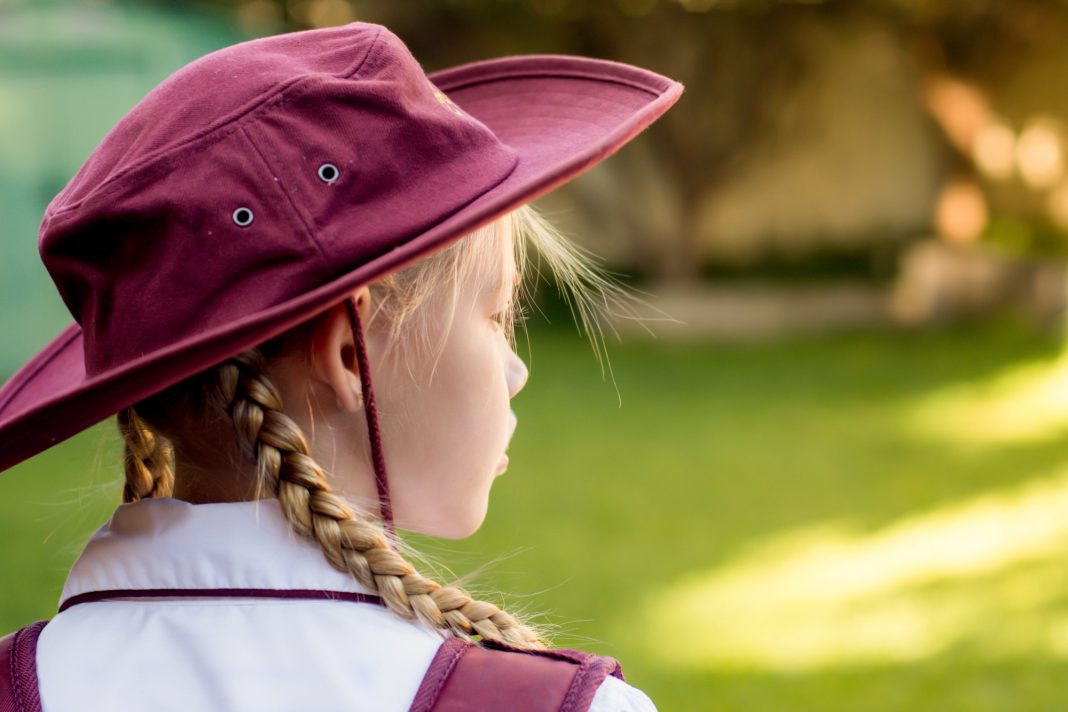UV exposure during childhood and adolescence has a significant impact on future skin cancer risk. Damage from UV exposure adds up over time, so the more you’re exposed, the greater your risk of skin cancer.
In this month’s issue of Retail Pharmacy Assistants e-magazine, Hailey Settineri looks at the importance of staying sun-smart when back to school.
Justine Osborne is the manager of SunSmart Schools and Early Childhood Program and chairs the National SunSmart Schools and Early Childhood Working Group. She says children attend early childhood services and schools during peak UV periods, so it’s especially important to protect them from UV.
“Any activity outdoors brings UV exposure,” she said. “This includes outdoor learning, PE lessons, sports days, excursions, school camps and recess times. Depending on the time and location, even the walk to and from school may require sun protection.
“You can’t see or feel UV but it’s out there every day and its effects add up over time. Your skin has a brilliant memory and never forgets.”
Reducing UV exposure in childhood not only reduces cancer risk, but it also creates healthy sun protection habits for life.
Instilling healthy habits
Families are key role models and influencers, says Ms Osborne.
“Research has shown that if adults use sun protection measures, their children will too. Creating a sun protection culture in the family helps ensure everyone is well protected when outdoors.”
These sun protection behaviours extend to early childhood services and primary schools where most schools and services across Australia have sun protection policies. Unfortunately, we don’t see the same behaviours in secondary schools and with teenagers, says Ms Osborne.
“Although preference for a tan among teenagers has reduced since 2003, improvement has stalled in recent years with 38 per cent still preferring a tan in the summer of 2016/17 and 26 per cent of teens reporting being sunburnt on summer weekends.
“We need to ensure we never stop reminding and encouraging people to be sun smart – across all age groups and all educational settings.
SunSmart schooling
The best sun protection comes from a combination approach. SunSmart’s message is to slip and slop and slap and seek and slide.
All sun protection measures play an important role in protecting from UV:
Slip on protective clothing that covers as much skin as possible. Try to choose clothing with a cool, densely woven fabric that is loose fitting to allow airflow for coolness. Ensure your child’s uniform or dress-code policy includes sun-protective clothing.
Slop on some SPF30 (or higher) broad-spectrum, water-resistant sunscreen on any parts of skin that can’t be covered with clothing. Make sure your child has had plenty of practice in applying sunscreen, so they’ll be all set for school. Pack some sunscreen in their bag so when the reminder comes to apply sunscreen before heading outside, they’ll be ready for this.
Slap on a wide-brimmed hat that shades the face, neck and ears. Caps and visors don’t make the grade when it comes to sun protection. Make sure you have a school hat that stays at school (and can’t be forgotten) and a walking hat to use during the walk to and from school.
Seek shady spaces for play and outdoor activities whenever possible. These might be built, natural or temporary. Even in the shade, UV can still reach you, so remember to continue to use other forms of sun protection.
Slide on some wrap-around sunglasses labelled AS1067, so you know they’ll help protect from UV. If sunglasses aren’t practical for your situation, a wide-brimmed hat can still help protect the eyes.
SunSmart recommends using all these forms of sun protection whenever the UV level is 3 or above.
Making sun protection fun
The SunSmart website offers plenty of free resources to help teachers and parents engage children in using sun protection.
“It’s important to encourage positive sun smart attitudes that can grow into daily habits,” Ms Osborne said. “This can be done by making sun protection fun – for example, dressing up the sunscreen bottle or singing a SunSmart song while applying it.”
And don’t underestimate the power of role modelling, she adds.
“If you use sun protection, your children are more likely to. Ask them to grab your hat when they grab theirs. Apply your sunscreen together. Will it be dots or squiggles this time? Persistence and consistency are the key.”







